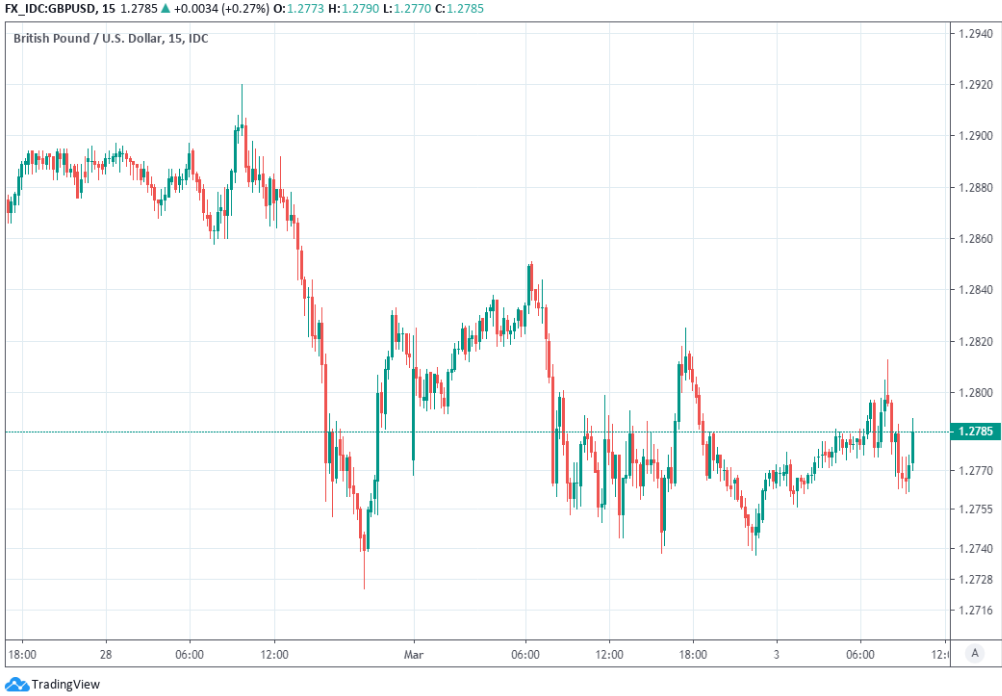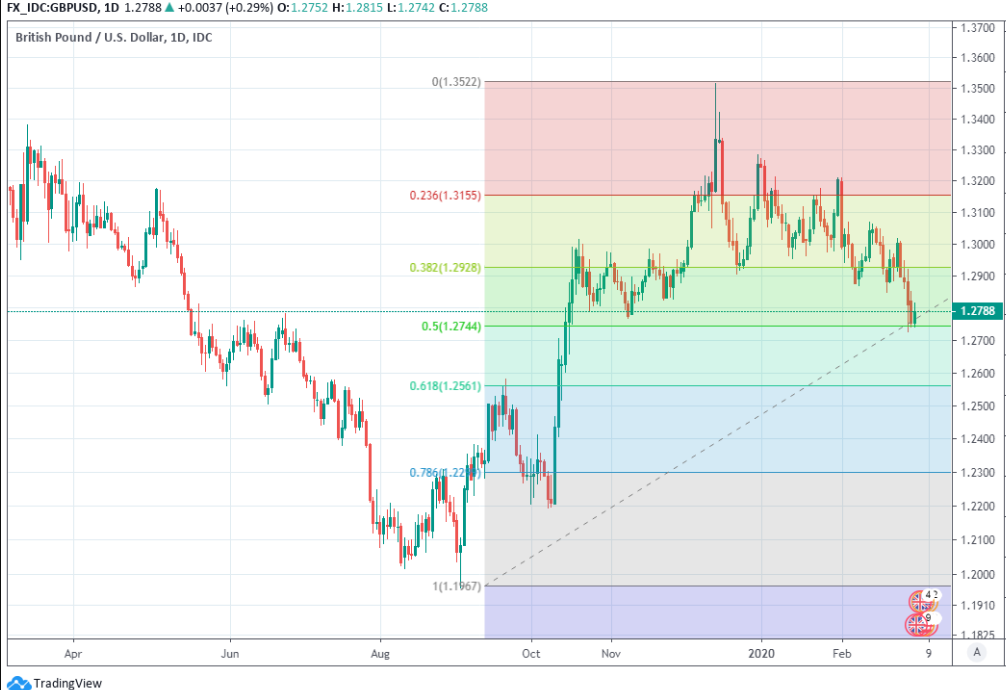Pound-to-Dollar Rate Supported by Data, Carney and Virus Action Plan
- Written by: James Skinner
-

© UK Parliament, Pound Sterling Live
- GBP/USD Spot rate: 1.2789, up +0.19% today
- Indicative bank rates for transfers: 1.2471-1.2507
- Transfer specialist indicative rates: 1.2628-1.2705 >> Get your quote now
The Pound-to-Dollar rate was buoyed Tuesday by strong construction industry data and as Bank of England (BoE) Governor Mark Carney appeared before the Treasury Select Committee where he ruled out the idea of an experiment with negative interest rates and pledged support for the economy.
Governor Mark Carney said the BoE will attempt to support the economy through a coronavirus shock that will be “large but temporary,” before ruling out any negative interest rates and reiterating the bank’s view that the UK has room for policy easing that’s equivalent to 250 basis points worth of rate cuts.
He also said markets should expect a policy response to the coronavirus disruption that has both fiscal and monetary elements. Pricing in the overnight-index-swap market implied on Tuesday that a March 26 rate cut to 0.50% from the BoE is a certainty, which should mean it's already in the price of the Pound.
“The BoE's statement hints that a rate cut is coming later this month, but don't expect more than 25bp of easing. Sterling's fall has softened the blow to financial conditions and, if extended, will lift inflation above-target. The latest money and credit data show the economy was gaining momentum quickly at the start of this year,” says Samuel Tombs, chief UK economist at Pantheon Macroeconomics.
WATCH LIVE: PM @BorisJohnson holds a press conference on coronavirus. https://t.co/JNOtZZWegU
— UK Prime Minister (@10DowningStreet) March 3, 2020
Above: Pound-to-Dollar rate shown at 15-minute intervals.
Carney's testimony came in a session where the Pound appeared to be stabilising against many rivals after a poor start to the new week, although it’s vulnerable to adverse coronavirus related news-flow, and around the same time the IHS Markit construction PMI surprised on the upside for February.
Sterling was lifted further as the construction PMI rose from 48.4 to 52.6 when markets were looking for an increase to only 49.0. The result indicates the construction industry is no longer in contraction and is more evidence of a so-called 'Boris Bounce' in the economy after the election.
“The current level of the PMI is consistent with construction output rising at a 0.5% quarter-on-quarter rate. Growth, however, might be even stronger than this in Q2, given that the new orders index jumped to 55.3—its highest level since December 2015—from 49.5 in January. Further ahead, we remain concerned that the hard Brexit envisaged by the Government will damage goods and services exports, thereby reducing occupancy of existing industrial and office space, and lead to lower levels of immigration, hitting demand for new homes. But for now, the construction sector has the winds in its sails," Tombs says.
Above: Pound-to-Dollar rate shown at daily intervals with Fibonacci retracements marked out.
The Pound-to-Dollar rate has found support around 1.2750 after breaking its multi-month uptrend last week, exposing it to the risk of further declines. However, stability comes just as markets are increasingly attuned to the threat posed by coronavirus to the smooth operation of the economy, with the number of confirmed cases in the UK growing sharply in recent days and now including at least one instance of ‘community infection’.
"Sterling historically doesn’t hold its value in a risk off environment and so is vulnerable to weakness. There’s no indication that this disruption will end soon, with worst case scenario modelling predicting that large numbers of people within the UK may contract coronavirus, likely prompting the government to take increasingly drastic steps to prevent its spread. If this takes the form of closures to businesses and results in large number of workers self-isolating, the knock-on effect on the wider UK economy could be huge," says Phil McHugh, chief market analyst at Currencies Direct.
Tuesday’s data and statements from Carney came as the government updated its action plan for managing the coronavirus outbreak. The UK has 40 coronavirus cases with most of them recently returned from overseas or being related to a recent returnee, although the first ‘community infection’ could indicate an increased risk of an outbreak.
The Pound could suffer in the event of a coronavirus outbreak but especially if there's one near London that leads investors to question whether the City can continue to operate smoothly, because the British currency depends for part of its value on steady inflows of overseas capital, which might dry up in the event of a crisis. It was already wounded amid turmoil in stock markets and in the process has sustained technical damage on the charts that is now a further risk to the outlook for the Pound-to-Dollar rate.
"GBP/USD failed last week ahead of the 55 day moving average at 1.3013 and the short term downtrend at 1.3013. It is looking more likely that the market is building a potential top. It has sold off towards the 50% retracement at 1.2736 and the 200 day moving average at 1.2697 and is currently holding above here, we would allow for some near term consolidation/rebound. A close below here will likely act as the catalyst for a break lower and would target 1.2291/1.2194 (October low)," says Karen Jones, head of technical analysis for currencies, commodities and bonds at Commerzbank.






